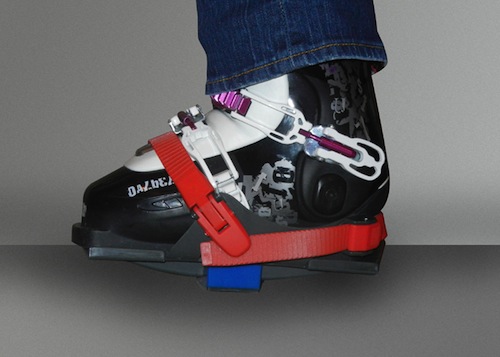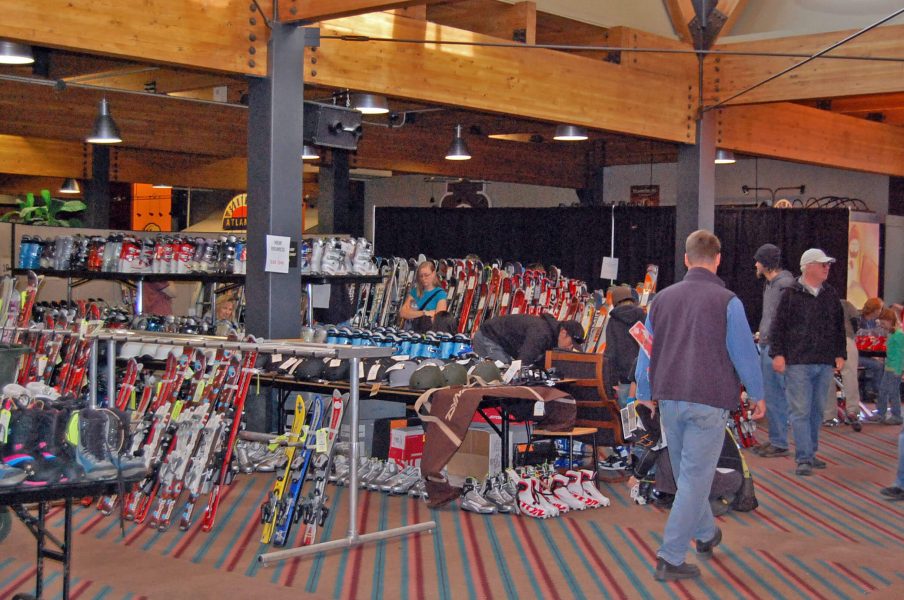Ski poles are the Rodney Dangerfield* of ski gear: they don’t get no respect. After all, they’re not sexy like skis, with splashy graphics, a wide range of shapes, and high tech materials. And unlike ski boots, they don’t require someone with specialized knowledge or mastery to get you fitted just right. Ski poles are basically long sticks with grips on one end and baskets on the other. They come in different sizes and a few different materials, but that’s about it.
Nevertheless, ski poles have been around for eons. According to Wikipedia, the earliest ski pole was found in Sweden and dates back to 3623 BC, while the earliest depiction of a man with a ski pole was found in Norway in the form of a cave painting, dated at 4000 BC.
But despite this long history, a lot of people still find ski poles a bit of a puzzle. Many can’t figure out what they’re used for or how to use them. And some disregard them entirely: little kids, for instance (unless you count whacking each other or engaging in fake sword fights), or even ski luminaries, like Andrea Mead Lawrence, two-time Olympic gold medalist.
Then there are those who think they use poles when they actually don’t. They just carry them down the mountain, one in each hand — like a rose or a can of beer — with nary a flick. This has always puzzled me. I mean, why hold onto something you’re not going to use?
So why do we have ski poles? Do we really need them? What the heck are they even for?
Glad you asked, because it’s a good question.
According to Dave Beckwith, Director of Killington’s Snowsports School, ski poles are indeed useful. And for a variety of reasons:
- Propulsion. You can use ski poles to push yourself along the flats.
- Balance. When you’re not moving, poles can be extra points of contact to facilitate balance.
- Timing/rhythm. The pole swing/touch aids in the rhythm and timing of a sequence of turns. It can act as a trigger or turn initiator.
- Blocking. The pole touch also aids in blocking or slowing the momentum of the upper body vs. the momentum of the lower body. When the lower body turns across the fall line and creates a countered relationship to the upper body, the upper body still has directional momentum. This can be slowed — or blocked, as we call it — typically in moguls or steeps. You can do this internally through the body and externally through the pole touch.
- Proprioception. Poles create added points of contact to provide information that can aid in your spatial relationship with the mountain.
- Deflecting. You can use a pole to navigate through areas by pushing off things to redirect yourself while moving.
- Unweighting. By applying pressure on a pole, you can help unweight yourself to jump over obstacles such as ice, dirt spots, or rocks.
- Visual aid. By observing your pole swing, other skiers may be able to better understand your directional intentions.
So is skiing without poles a bad idea? Dave says no. “Some folks just like to ski without poles. And some coaches like to teach students without poles. Often, the reason is to develop good habits and movement patterns within the body rather than relying on external input too early through improper pole use. Typically, you’ll see coaches teach young kids without poles because the poles can be a distraction. I’m an advocate of teaching with poles from the outset. I want to give students all the tools they need for success right from the beginning.”
Katy Perrey, a member of TheSkiDiva forum and a Level 3 Keystone instructor who often teaches in the mountain’s women’s clinic, agrees. “Ski poles can be a disadvantage at lower levels because people don’t learn to balance on their skis and feet. They’re always trying to balance using their poles. At the upper levels, when used properly, poles can help with timing in turns, bumps, and steeps. The swing of the pole should make you move forward into the direction of the beginning of the turn. That said, we should all be able to ski all types of terrain without poles because of a balanced stance.”
What’s the biggest mistake people make using poles? According to Katy, it’s having your hands all over the place, as well as bad timing. “When you watch super-skilled skiers, you don’t notice the poles or the pole swing/plant. With a lesser-skilled skier, the poles are much more noticeable because their arms and hands are moving all over the place. This causes serious upper body rotation, which is very bad.”
Dave sees two mistakes. “Either people don’t use them at all — the poles are just along for the ride — or their pole plant timing is off. This can keep the skier from getting the best response from their gear or the smoothest ride possible.”
So don’t dismiss the lowly pole. Embrace it. Give it the respect it deserves. And use it in a way that helps your skiing. That’s what it’s for.
BTW, check out a thread on skiing without poles on TheSkiDiva forum. Go here.
*Late 20th century stand-up comic and actor




